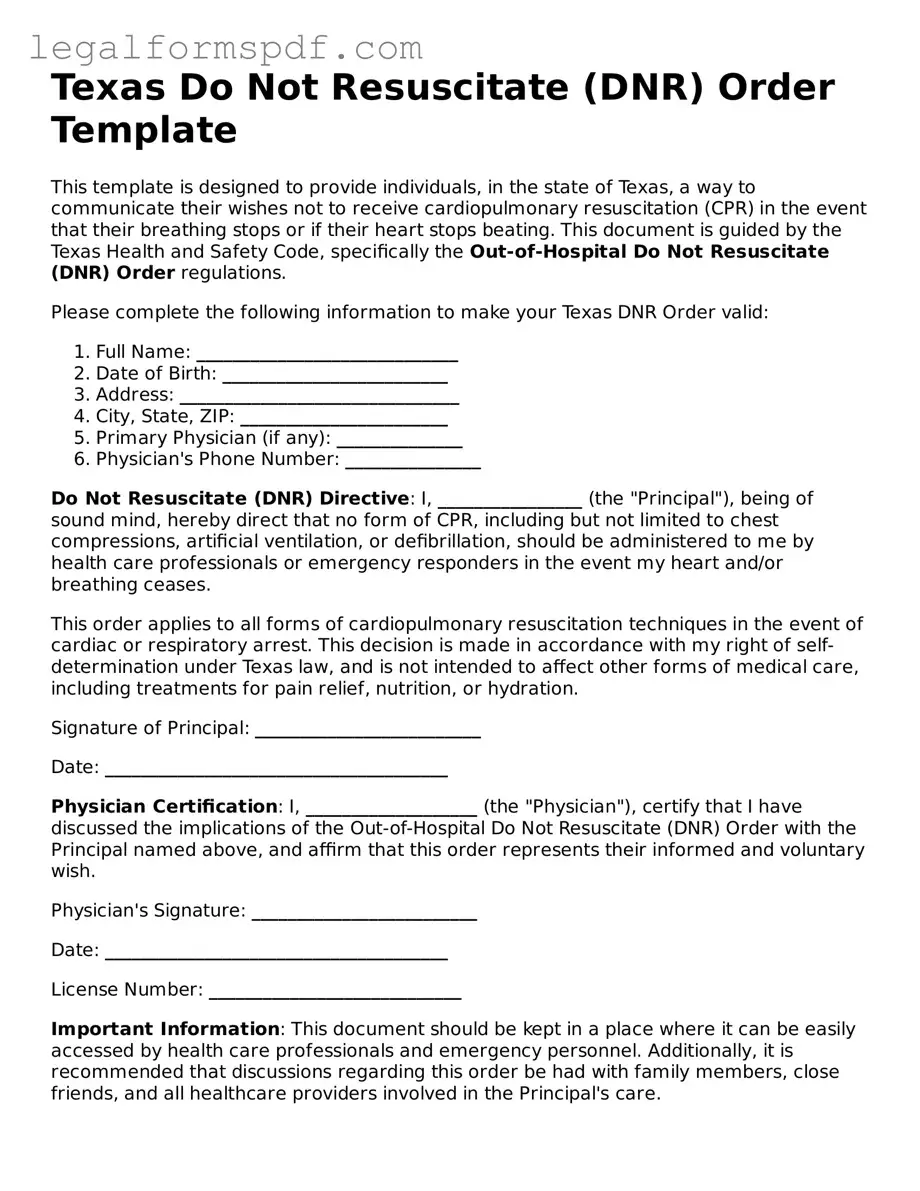Texas Do Not Resuscitate (DNR) Order Template
This template is designed to provide individuals, in the state of Texas, a way to communicate their wishes not to receive cardiopulmonary resuscitation (CPR) in the event that their breathing stops or if their heart stops beating. This document is guided by the Texas Health and Safety Code, specifically the Out-of-Hospital Do Not Resuscitate (DNR) Order regulations.
Please complete the following information to make your Texas DNR Order valid:
- Full Name: _____________________________
- Date of Birth: _________________________
- Address: _______________________________
- City, State, ZIP: _______________________
- Primary Physician (if any): ______________
- Physician's Phone Number: _______________
Do Not Resuscitate (DNR) Directive: I, ________________ (the "Principal"), being of sound mind, hereby direct that no form of CPR, including but not limited to chest compressions, artificial ventilation, or defibrillation, should be administered to me by health care professionals or emergency responders in the event my heart and/or breathing ceases.
This order applies to all forms of cardiopulmonary resuscitation techniques in the event of cardiac or respiratory arrest. This decision is made in accordance with my right of self-determination under Texas law, and is not intended to affect other forms of medical care, including treatments for pain relief, nutrition, or hydration.
Signature of Principal: _________________________
Date: ______________________________________
Physician Certification: I, ___________________ (the "Physician"), certify that I have discussed the implications of the Out-of-Hospital Do Not Resuscitate (DNR) Order with the Principal named above, and affirm that this order represents their informed and voluntary wish.
Physician's Signature: _________________________
Date: ______________________________________
License Number: ____________________________
Important Information: This document should be kept in a place where it can be easily accessed by health care professionals and emergency personnel. Additionally, it is recommended that discussions regarding this order be had with family members, close friends, and all healthcare providers involved in the Principal's care.
For any questions or more detailed information regarding the Texas DNR Order, please consult with a legal professional or healthcare provider.
